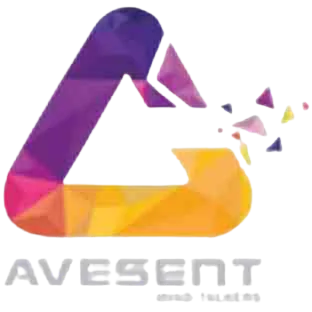In today’s fast-changing digital world, advertising has become more complex than ever before. Brands invest millions in online campaigns, but they still struggle with issues like ad fraud, lack of transparency, and data privacy concerns. Consumers, on the other hand, are bombarded with irrelevant ads and have little control over their own data. This is where blockchain, a technology often linked with cryptocurrencies, is stepping in as a game-changer. By bringing transparency, security, and efficiency, blockchain has the potential to completely transform digital advertising.
The Current Problems in Digital Advertising
Digital advertising is booming, but the system is far from perfect. One of the biggest challenges is ad fraud. Fake clicks, bots, and false impressions cost advertisers billions of dollars each year. Marketers often have no clear picture of whether their ads are truly reaching real people.
Another concern is lack of transparency. Advertisers work through several middlemen—agencies, ad exchanges, and publishers—making it hard to track where their money actually goes. This not only wastes budgets but also reduces trust in the entire ecosystem.
Consumers are equally dissatisfied. Many users feel their privacy is constantly invaded, as companies collect and sell personal data without consent. With rising awareness about data security, people are becoming more cautious about how their information is used.
How Blockchain Enters the Scene
Blockchain technology, at its core, is a decentralized digital ledger that records transactions securely and transparently. Unlike traditional systems, it does not rely on a central authority. Every record is stored across multiple computers, making it nearly impossible to alter or fake.
Applied to digital advertising, blockchain can create a system where advertisers, publishers, and users interact directly. This reduces fraud, increases accountability, and ensures fair value exchange.
Greater Transparency and Trust
One of the biggest advantages blockchain brings is transparency. Every transaction—whether it’s an ad placement, a click, or a payment—can be recorded on a blockchain. Advertisers can see exactly where their money is going, while publishers can prove the authenticity of their traffic.
Smart contracts, powered by blockchain, can automate ad deals. For example, an advertiser can set conditions such as “pay only if the ad is seen by a real human for at least 10 seconds.” Once these conditions are met, the payment is automatically executed. This creates trust between all parties without needing a middleman.
Fighting Ad Fraud with Blockchain
Ad fraud is one of the most damaging problems in the industry, but blockchain offers powerful solutions. Since blockchain records are immutable and publicly verifiable, it becomes much harder for fraudsters to manipulate impressions or clicks. Advertisers can verify whether their ads are reaching real users instead of bots.
Startups and tech companies are already developing blockchain-based ad verification tools that track impressions in real time. With this system, fraudulent activities can be detected instantly, saving billions in wasted ad spend.
Empowering Consumers with Data Ownership
Blockchain can also shift power back to consumers. Currently, big tech companies collect user data, sell it to advertisers, and profit without sharing value with the individuals who generate that data. Blockchain could change this by giving users full control over their information.
For instance, users could choose to share certain data with advertisers in exchange for rewards or tokens. This way, they not only maintain privacy but also get compensated for their engagement. Imagine watching an ad and earning tokens that you can use for online purchases. This kind of value exchange could completely change the way people view digital advertising.
Cost Efficiency and Direct Connections
With blockchain, advertisers and publishers can connect directly, cutting out multiple intermediaries. This reduces unnecessary fees and ensures that more of the budget goes toward actual ad placements. Publishers benefit by receiving higher payouts, while advertisers enjoy better returns on investment.
Moreover, blockchain can simplify payment systems by using cryptocurrencies or tokens. This allows faster, borderless transactions that benefit global advertisers and publishers alike.
Future Outlook: A New Era of Advertising
Blockchain in digital advertising is still in its early stages, but its potential is massive. Companies like Brave with its Basic Attention Token (BAT) are already experimenting with blockchain-based ad models where users, advertisers, and publishers all benefit equally.
As the industry evolves, blockchain may become the foundation of digital advertising. From fraud prevention to consumer empowerment and cost savings, the technology could fix many of the current flaws in the system.
Conclusion
The digital advertising world is on the edge of a major transformation, and blockchain is leading the way. By ensuring transparency, reducing fraud, and giving power back to consumers, blockchain technology promises to create a fairer, more efficient, and more trustworthy ecosystem.
In the near future, the ads you see may not just be more relevant—they might also reward you for your attention. That is the revolution blockchain is bringing to digital advertising.




